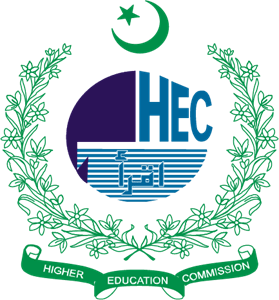Prevalence and Determinants of Drugs Abuse Among Youth in Hyderabad, Sindh, Pakistan
Abstract
The current qualitative research focuses on substance abuse and addiction among young people as a primary area of investigation. This study aimed to shed light on the substance that young people in Hyderabad, Sindh, take the most frequently and the most critical factors contributing to drug addiction. The research was carried out by proceeding to a mental hospital drug rehabilitation ward in Hyderabad, Sindh, and conducting face-to-face interviews with a total of 36 participants, ranging in age from 16 to 22, including both males and females. The participants were selected using a technique known as purposeful sampling. The study's findings indicated that alcohol, heroin, and ice drugs are the three substances used by young people with the most significant prevalence. In addition, researchers found that intra-personal factors, such as problems with mental health and entertainment, and extra-personal factors, such as peer pressure and the influence of the neighborhood, as well as the impact of the media, are the primary contributors to substance abuse among young people. According to the findings of the study, one preventative measure that may be taken to lower rates of drug addiction among young people is for parents, schools, governments, and other social groups to work together to educate young people about the negative consequences of drug consumption.
References
Ahmed, B., Yousaf, F. N., Saud, M., & Ahmad, A. (2020). Youth at risk: The alarming issue of drug addiction in academic institutions in Pakistan. Children and Youth Services Review, 118, 105385. https://doi.org/10.1016/j.childyouth.2020.105385
Akbari, M., Orouji, M. A., Shahini, N., Rostami, H., Mohammadi, K., & Charkazi, A. (2021). Initiation of Methamphetamine Use in Khomein County, Iran. The Turkish Journal on Addictions, 8(2), 113-117. https://doi.org/10.5152/ADDICTA.2021.21015
Athauda, L. K., Peiris-John, R., Ameratunga, S., McCool, J., & Wickremasinghe, R. (2020). Factors influencing alcohol use among adolescents in south Asia: A systematic review. Journal of Studies on Alcohol and Drugs, 81(5), 529-542. https://doi.org/10.15288/jsad.2020.81.529
Bromet, E., Andrade, L. H., Hwang, I., Sampson, N. A., Alonso, J., De Girolamo, G., ... & Kessler, R. C. (2011). Cross-national epidemiology of DSM-IV major depressive episode. BMC Medicine, 9(1), 1-16. https://doi.org/10.1186/1741-7015-9-90
Bryman, A. (2017). Quantitative and qualitative research: Further reflections on their integration. In Mixing methods: Qualitative and quantitative research. London, UK: Routledge. https://doi.org/10.4324/9781315248813-3
Burns, L. (2014). World drug report 2013 by United Nations office on drugs and crime. New York, NY: United Nations. https://doi.org/10.1111/dar.12110
Choy, L. T. (2014). The strengths and weaknesses of research methodology: Comparison and complimentary between qualitative and quantitative approaches. IOSR Journal of Humanities and Social Science, 19(4), 99-104. https://doi.org/10.9790/0837-194399104
Daley, J., Elliott, F. J., Gibbs, T. M., & Kitteringham, G. (2020). Substance abuse. In The Professional Protection Officer. Oxford, UK: ButterworthHeinemann. https://doi.org/10.1016/B978-0-12-817748-8.00022-5
Degenhardt, L., Singleton, J., Calabria, B., McLaren, J., Kerr, T., Mehta, S., ... & Hall, W. D. (2011). Mortality among cocaine users: a systematic review of cohort studies. Drug and Alcohol Dependence, 113(2-3), 88-95. https://doi.org/10.1016/j.drugalcdep.2010.07.026
Emmel, N. (2013). Purposeful sampling. Sampling and choosing cases in qualitative research: A realist approach. New York, NY: SAGE Publications. https://doi.org/10.4135/9781473913882.n3
Fischer, B., Keates, A., Bü hringer, G., Reimer, J., & Rehm, J. (2014). Non-medical use of prescription opioids and prescription opioid-related harms: Why so markedly higher in North America compared to the rest of the world? Addiction, 109(2), 177-181. https://doi.org/10.1111/add.12224
Foo, Y. C., Tam, C. L., & Lee, T. H. (2012). Family factors and peer influence in drug abuse: a study in rehabilitation centre. International Journal of Collaborative Research on Internal Medicine & Public Health, 4(3), 190-201.
Ghazal, P. (2019). Rising trend of substance abuse in Pakistan: a study of sociodemographic profiles of patients admitted to rehabilitation centres. Public Health, 167, 34-37. https://doi.org/10.1016/j.puhe.2018.10.020
Grant, S., Azhar, G., Han, E., Booth, M., Motala, A., Larkin, J., & Hempel, S. (2021). Clinical interventions for adults with comorbid alcohol use and depressive disorders: A systematic review and network meta-analysis. PLoS Medicine, 18(10), e1003822. https://doi.org/10.1371/journal.pmed.1003822
Memon, A., H., Arain, M., A., Kalhoro, H., B., & Shaikh, S., A. (2022). Crimes and determinants of young criminals: A study of interior Sindh, Pakistan. Journal of Management Practices, Humanities and Social Sciences, 6(4), 71-77. https://doi.org/10.33152/jmphss-6.4.8.
Irum, S., & Khoso, P. A. (2020). Unpacking Youth Violence: Exploring the Impact of Social Media on Youth Violence in Pakistan. Sylwan, 164(12), 286-301.
Jackson, K. M., Janssen, T., & Gabrielli, J. (2018). Media/marketing influences on adolescent and young adult substance abuse. Current Addiction Reports, 5(2), 146-157. https://doi.org/10.1007/s40429-018-0199-6
Jan, S. U. K., Ali, A., Niqab, M., & Iqbal, S. (2022). Causes of Initiation of Methamphetamine Use in Khyber Pakhtunkhwa, Pakistan: A Qualitative Study. Addicta: The Turkish Journal on Addictions (Ahead of print). https://doi.org/10.5152/ADDICTA.2022.22030
Janssen, T., Treloar Padovano, H., Merrill, J. E., & Jackson, K. M. (2018). Developmental relations between alcohol expectancies and social norms in predicting alcohol onset. Developmental Psychology, 54(2), 281-292. https://doi.org/10.1037/dev0000430
Kabore, A., Afriyie-Gyawu, E., Awuah, J., Hansen, A., Walker, A., Hester, M., ... & Meda, N. (2019). Social-ecological factors affecting substance abuse in Ghana (West Africa) using photovoice. The Pan African Medical Journal, 34, 1-9. https://doi.org/10.11604/pamj.2019.34.214.12851
Low, S., Shortt, J. W., & Snyder, J. (2012). Sibling influences on adolescent substance use: The role of modeling, collusion, and conflict. Development and Psychopathology, 24(1), 287-300. https://doi.org/10.1017/S0954579411000836
Malik, A., A., Nawaz, S., Tahir, A. A., Ahmed, S., Ashraf, S., Hanif, N., & Malik, M., R. (2012). Knowledge and awareness of harmful effect of substance abuse among users and non-users: A cross-sectional study from Bari Imam. The Journal of the Pakistan Medical Association, 62(4), 412–415.
Malik, A., & Sarfaraz, S., F. (2011). Origin and development of drug addiction in South Asia with special reference to Pakistan. Pakistan Journal of Commerce and Social Sciences (PJCSS), 5(1), 155-165. http://hdl.handle.net/10419/188021.
Marshall, E., J. (2014). Adolescent alcohol use: Risks and consequences. Alcohol and Alcoholism, 49(2), 160–164. https://doi.org/10.1093/alcalc/agt180.
Masood, S., & Us Sahar, N. (2014). An exploratory research on the role of the family in youth's drug addiction. Health Psychology and Behavioral Medicine: An Open Access Journal, 2(1), 820-832. https://doi.org/10.1080/21642850.2014.939088.
Mbuthia, G., Wanzala, P., Ngugi, C., W., & Nyamogoba, H., D., N. (2020). A qualitative study on alcohol and drug abuse among undergraduate (university students) in the coastal region of Kenya. African Journal of Health Sciences, 33(1), 38-48.
Morera, J., A., C., Parada, A., R., D., Ogowewo, B., Gough, H., Alava, M., M., S., Zeferino, M., T., & Khenti, A. (2015). The role of family relations, spirituality and entertainment in moderating peer influence and drug use among students of eight universities from five countries in Latin America and three from the Caribbean. Texto & Contexto-Enfermagem, 24, 106-116. https://doi.org/10.1590/0104-07072015001130014.
Richert, T., Anderberg, M., & Dahlberg, M. (2020). Mental health problems among young people in substance abuse treatment in Sweden. Substance Abuse Treatment, Prevention, and Policy, 15(1), 1-10. https://doi.org/10.1186/s13011-020-00282-6.
Sahar, M., Riaz, S., & Khan, S. Z. (2020). Substance abuse among educated youth: Challenges and problems faced by the families in Karachi, Pakistan. The Sparak a HEC Recognized Journal, 5(1), 188-208.
Sajid, M. A., Tatlah, I. A., & Butt, I. H. (2020). Causes of drug abuse among university students in Pakistan: Variation by gender and drug type. Pakistan Social Sciences Review, 4(1), 459-468. https://doi.org/10.35484/pssr.2020(4-i)36
Sattari, M., Islambulchilar, M., Toluyi, M., & Mashayekhi, S. (2012). Sociodemographic characteristics of the addicted inmates of Qom and Tabriz prisons in Iran. Advanced Pharmaceutical Bulletin, 2(1), 61. https://doi.org/10.5681/apb.2012.009.
Schreier, M. (2012). Qualitative content analysis in practice. California, CA: Sage publications.
Shahid, S.,S. (2022). Mental health issues of youth in Pakistan. Retrevied from https://bit.ly/3FHERpQ.
Siddique, F., Mann, A., A., & Ali, T. (2012). Influence of social factors on drug use behavior in Punjab, Pakistan. Pakistan Journal of Nutrition, 11(11), 1099.
Skinner, B., F. (1965). Science and human behavior. New York NY: Simon and Schuster.
Soomro, S., Qureshi, M. B., & Baloch, F. (2018). Drug addiction scenario in Pakistan effects and consequences over youth. Journal of Grassroots, 48(2), 115-130.
Tanweer, H., Batool, Z., Shabbir Chaudhary, M., & Mahmood, S. (2019). The social impact of substance abuse on males livelihood in Punjab, Pakistan. European Online Journal of Natural and Social Sciences, 8(4), 777-783.
UNODC. (2014). World drug report. Retrieved from https://bit.ly/3zFqDlH.
Wazir, M., N., K., Fatima, K., Ahmad, H., R., Kakakhel, S., Yusuf, N., & Wahid, F. (2022). Association and effects of trauma, displacement, and illicit drug use on psychiatric illnesses in Khyber Pakhtunkhwa, Pakistan. Cureus, 14(2). https://doi.org/10.7759/cureus.22079.
Welch, K. A., Carson, A., & Lawrie, S. M. (2013). Brain structure in adolescents and young adults with alcohol problems: A systematic review of imaging studies. Alcohol and Alcoholism, 48(4), 433–444. https://doi.org/10.1093/alcalc/agt037.
Zaman, M., Razzaq, S., Hassan, R., Qureshi, J., Ijaz, H., Hanif, M., & Chughtai, F. R. (2015). Drug abuse among the students. Pakistan Journal of Pharmaceutical Research, 1(1), 41–47.

This work is licensed under a Creative Commons Attribution-NonCommercial 4.0 International License.






